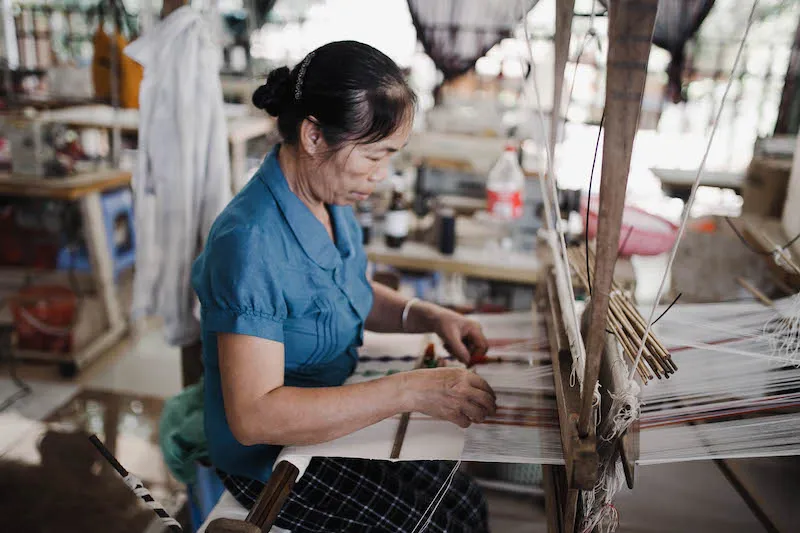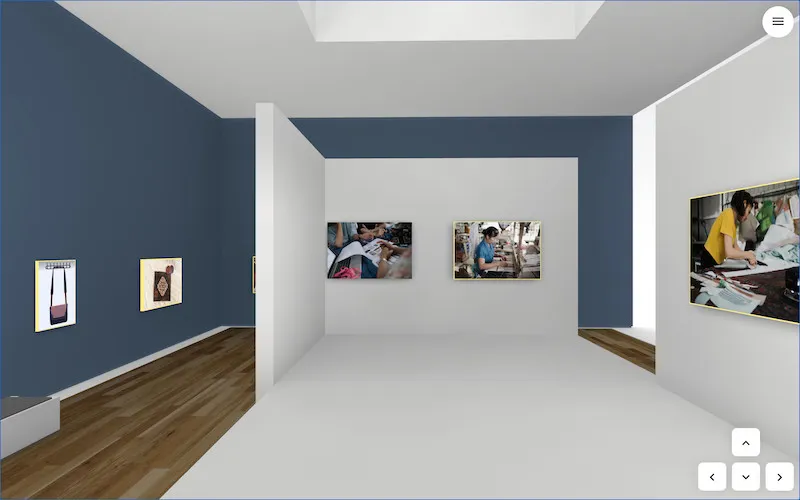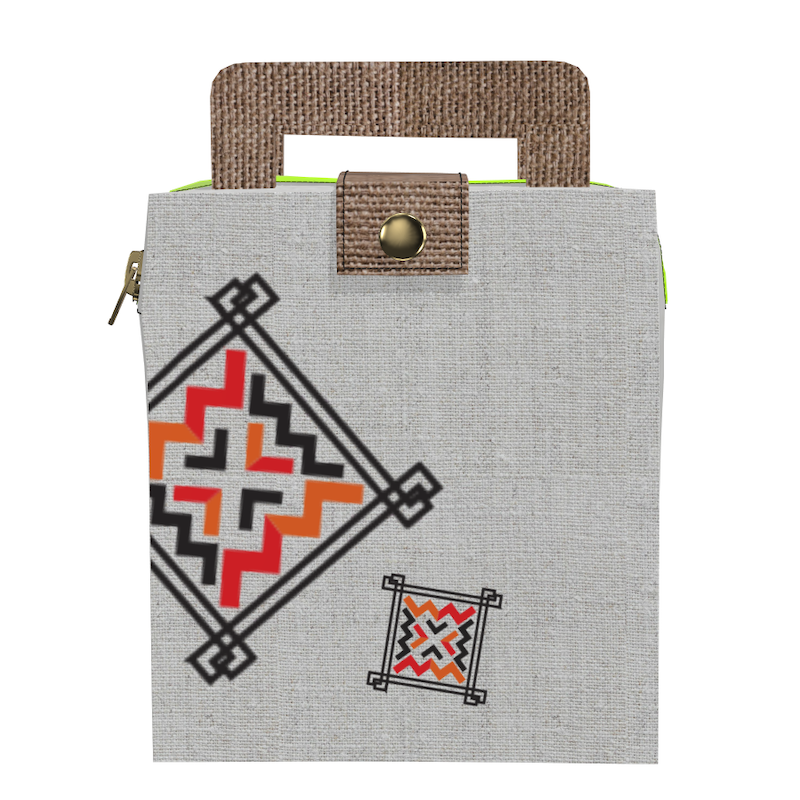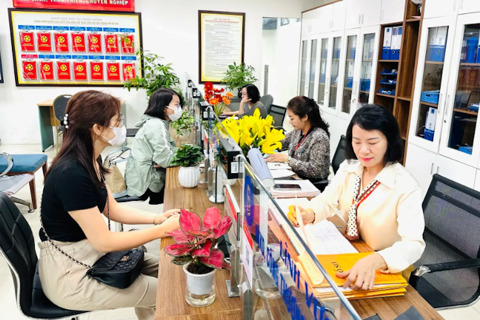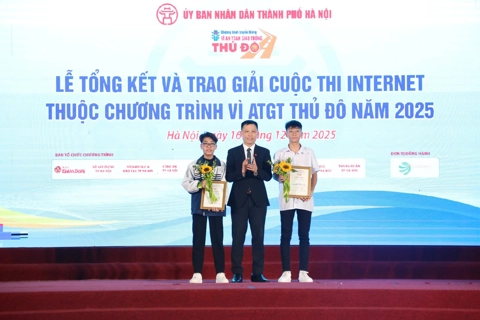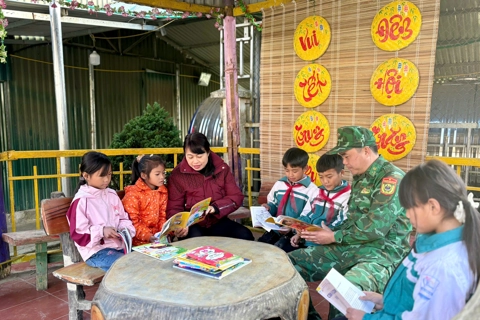New technology improves livelihoods for Thai women
Local stakeholders are working together to preserve traditional brocade weaving of Thai ethnic groups, upskill and improve the livelihoods of ethnic minority women.
Thai women at Thuan Hoa Social Protection Center in Mai Chau Commune, the northern mountain province of Hoa Binh, have grasped opportunities to understand the market demand for products made of traditional brocade as well as approach new technologies to upskill themselves and their livelihoods.
| A local artisan in Mai Chau, Hoa Binh Province. Photos: RMIT |
Artisan Vi Thi Thuan, who established the center in 2009 to help the ethnic minority people have a secured income, shared with The Hanoi Times that the Thai women encountered difficulties in designing products that suit the tastes of customers, especially young people in the context of high demanding consumption.
She added: “It is our pleasure to receive a project’s support to improve the capacity in production and product development.”
The support has come from the Vietnamese Women’s Museum, RMIT University, and Thuan Hoa Social Protection Centre, who conducted the “Empowerment for Ethnic Women in Mai Chau, Hoa Binh through Cultural Sustainability” project since 2020.
Under the project, Thuan Hoa Social Protection Center participated in the production process to create products that are inspired by Thai cultural identity but with a contemporary twist.
As one of the project’s key stakeholders, the Vietnamese Women’s Museum pioneered coordinating and recommending practical solutions for proposed design ideas of RMIT University.
Fifty RMIT Bachelor of Fashion (Enterprise) first-year students joined the design process which resulted in 21 bag motifs, 18 clothing designs, and 12 modern patterns using Thai cultural elements.
| RMIT students are discussing with artisans about one design |
As one of the RMIT fashion students joining the project, Do Le Ha My expressed that she and other participants have tried to contribute to promoting the traditional costume of the H'mong people by drawing the attention of the young generation through innovative designs while maintaining authentic values.
In the working process, one of the challenges that Ha My faced was being innovative and contemporary while keeping the original value of the ethnic group’s culture.
To overcome such challenges, they thoroughly researched the recent trends to apply the traditional motifs on modern designs in a creative way that would appeal to today's generation, she told The Hanoi Times.
“Working on the project provided me a chance to learn more about the textile design and technology of Vietnamese ethnic groups in Hoa Binh, particularly the H'mong,” she added.
Their culture has always been linked to the way of living of the local population. The motifs and symbols on H’mong traditional clothing have different meanings and roles in terms of cultural beliefs, clan identification, and tales. In addition, numerous techniques utilized by H'mong women, such as appliqué, reverse appliqué, and batik also contribute to the community’s distinctive culture.
Spreading the project’s values
| The “Hyphen” virtual exhibition is open to the public |
To spread the values brought from the project, a virtual exhibition with the theme “Hyphen” takes place, aiming to raise the voices and concerns of Thai women in adapting to modern life while preserving their traditional culture.
The activity is expected to spread awareness of the traditional culture of the young generation to the public and convey the joint working process among the stakeholders in connecting and creating new products using the traditional brocade weaving techniques of Thai people in Mai Chau, Hoa Binh, according to RMIT.
With a variety of display forms such as photos, videos, and interviews, the exhibition is divided into two themes including “Generating ideas” and “Supporting the community”. It remains open until March 10 2022 and could be accessed at https://artspaces.kunstmatrix.com/en/exhibition/8718491/gach-noi-hyphen
Nguyen Hai Van, Director of the Vietnamese Women’s Museum, shared: “With the worthwhile and sustainable initial results of the project, we sincerely hope that the project model will be replicated by many other ethnic women groups and create new cultural values in responding to the development of today’s society.”
Professor Julia Gaimster, RMIT Dean of School of Communication & Design, emphasized the university is committed to supporting the Vietnamese community by using their expertise and resources to enable the preservation of the craft and heritage skills in Vietnam and to address challenges that have been heightened in the recent pandemic-putting many of the smaller community producers at risk.
| A bag pattern design to be displayed at the exhibition |
Through the activities, Ha My hoped that more people will be interested in wearing garments with traditional values of Vietnamese ethnic minorities, which will allow enhancing the economic and commercial benefits for women in Hoa Binh who work in the garment industry.
For Thuan, the owner of the center, the project is meaningful for the women when the pandemic affected their living to some extent. “It would create more sustainable jobs for our women especially in the context of many uncertainties caused by the Covid-19 pandemic while preserving our cultural identity,” she said.
“I hope the project will be further expanded and get more public attention,” she told The Hanoi Times.
The stakeholders of the project will continue to accompany the Thai ethnic group in Hoa Binh to implement the next phase which is commercializing the products developed from the project.

